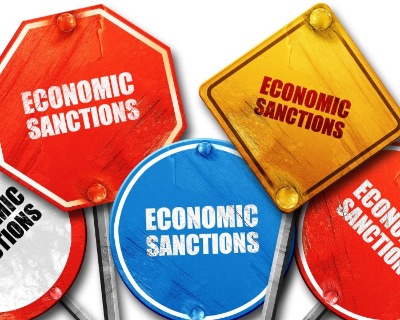International Financial Sanctions: How is the landscape changing?
International businesses are facing a more challenging and perilous sanctions environment. Brett Hillis and Leigh Hansson, partners at Reed Smith, discuss key sanctions regimes in Russia and Iran, as well as the long-reach of US sanctions, Brexit, and the uncertainties raised by the EU Blocking Regulation.

International businesses are facing a more challenging and perilous sanctions environment. Not only are there more sanctions regimes to consider, but those regimes that have been instituted by major jurisdictions are increasingly varied, and in cases such as Iran, in direct conflict. Companies face an uncertain political environment relating to key sanctions regimes in Russia and Iran; the long-reach of U.S. sanctions; and the uncertainties raised by the EU Blocking Regulation. At the same time, there is the potential for a new post-Brexit sanctions regime, as well as questions about the effect of Brexit on the EU regime itself. In this scenario, companies are increasingly looking to manage sanctions risk through contractual drafting, but arriving at an agreed position that covers all the bases can be difficult.
There are more sanctions regimes than businesses think (the UK Office of Financial Sanctions Implementation website lists 32 regimes), but the regimes currently attracting most concern are those relating to Russia and Iran. For both of these sanctions targets, the position of the two most significant sanctioning jurisdictions (the United States and the European Union) have increasingly diverged.
Russia
In the case of Russia, the regimes instituted in the U.S. and EU relating to the situations in Crimea and Eastern Ukraine were in step until the U.S. sanctions targeting Russia were expanded as a result of the Countering America’s Adversaries through Sanctions Act (CAATSA). CAATSA codified many of the Russia-related sanctions previously imposed through executive order, thereby requiring the President to obtain Congressional approval before easing the targeted U.S. sanctions relating to Russia. It also expanded so-called “secondary sanctions” that apply to non-U.S. companies even when there is no U.S. nexus. In the context of Ukraine-related Sanctions, these include the risk of becoming subject to sanctions by engaging in “significant transactions” for, or on behalf of, Specially Designated Nationals (SDNs) sanctioned pursuant to Ukraine-/Russia-related sanctions authorities. The U.S. decision to designate almost 40 companies, oligarchs, and officials as SDNs on 6 April 2018 (some of them very active and well-known), raised the exposure of non-U.S. companies to these secondary sanctions.
Two specific areas of secondary sanctions exposure under CAATSA are of interest to the energy industry. The first, relating to investment by non-U.S. parties in Russian crude oil projects. Specifically, the President is required, unless he determines it is not in U.S. national security interests, to impose sanctions on any person that “knowingly makes a significant investment” in a “special Russian crude oil project,” including projects to extract crude from deep waters, Russian Artic offshore locations and shale formations located in Russia.
The second area of risk is investment by non-U.S. companies in Russian energy pipelines. CAATSA gives the President the power to impose (but does not require) secondary sanctions on non-U.S. persons making investments that contribute to enhancing Russia’s ability to construct energy export pipelines, or providing Russia with goods, services, technology, services etc. that could facilitate the construction, modernisation, or repair of energy pipelines. The President is required to impose the above sanctions “in coordination with allies of the United States”. This provision was added to CAATSA to address concerns raised by European allies in light of projects such as the Nord Stream 2 natural gas pipeline from Russia to Germany. The President has not yet used this authority granted him by CAATSA.
In contrast to the developing U.S. sanctions position on Russia, EU sanctions have remained unchanged. This reflects the fact that changes to EU sanctions require unanimity among the EU member states, countries with very different policy positions regarding Russia.
Iran
The EU has been extremely active in seeking to counter the sanctions resulting from President Trump’s decision, announced on 8 May, that the United States would withdraw from the Joint Comprehensive Plan of Action (JCPOA). This decision has led to the U.S. Department of Treasury, Office of Foreign Assets Control (OFAC) reimposing sanctions on Iran, including secondary sanctions. OFAC also announced that it would impose those sanctions after a 90-day wind-down period ending on 7 August and a 180-day wind-down period on 5 November.
The U.S. sanctions are extremely broad and several European companies responded by pulling out of Iran. The EU itself responding by activating the EU Blocking Regulation to the extra-territorial aspects of the U.S. sanctions.
This leaves European businesses in a particularly difficult position. The EU Blocking Regulation bans EU companies from complying with the U.S. sanctions as they apply to do business between the EU and Iran. These companies are left with the choice of risking severe penalties under U.S. sanctions if they do business with Iran, or risking punishment by the EU if they comply with the U.S. measures. On balance, though, it is the U.S. sanctions that companies tend to be most concerned about. After all, in the previous history of the EU Blocking Regulation, there have been relatively few instances where a company has actually been subject to enforcement action. In the case of Iran, there are potentially lots of reasons why European companies may not want to do business there beyond U.S. sanctions, thereby making the EU Blocking Regulation much more difficult to enforce.
In response to the failure of the EU Blocking Regulation to keep companies in Iran, the EU has discussed setting-up a Special Purpose Vehicle (SPV) in an EU Member State to facilitate payments related to Iran’s exports. This company would presumably be interposed in the payment mechanics, sitting between an EU-based purchaser and Iranian exporter. It is expected that it will take some months to establish such an entity and as yet its location has not been publicly announced.
Companies expecting the SPV to provide a way around U.S. sanctions should be extremely cautious. President Trump has explicitly said that companies must choose between doing business in Iran and doing business in the U.S. The U.S. Administration could very easily look upon the use of the SPV as a means to circumvent the effect of U.S. sanctions on Iran. If the result is that European companies can continue doing business in Iran, then the result could well be that the Trump administration will just impose more sanctions.
The Iranian situation illustrates the indispensable nature of U.S. markets and the U.S. financial system. Many global companies, based not just in Europe, but in other major jurisdictions, do not feel they can jeopardise their access to the U.S., even where home governments seek push them in a different direction.
“Brexit”
Brexit adds another layer of complexity and uncertainty for companies seeking to comply with the multitude of national and international sanctions regime. If there is an agreed transition arrangement, it is likely the UK will continue to apply EU sanctions. Once it is ended, or immediately following the UK’s withdrawal from the EU if there is no transitional deal, the UK will have the power to apply different sanctions. The necessary Acts of Parliament enabling this have already been passed by way of the Sanctions and Anti-Money Laundering Act 2018 and certain parts of the European Union (Withdrawal) Act 2018. There are many open questions about the future UK sanctions policy, not least the extent to which the UK will coordinate or align its sanctions policy with the EU, or perhaps move closer in policy to the US.
Drafting for change
Over the past years, it has become increasingly common for contracts to include specific clauses giving parties various contractual rights if the other party becomes a target of sanctions, or dealing with them may otherwise have sanctions consequences. This is because more general Force Majeure or Illegality clauses sometimes do not cover all situations the parties want to cover, or do not have the preferred type of effect. Drafting these clauses requires careful consideration of the potential sanctions risks (e.g. ensuring the language is broad enough to cover secondary sanctions risks). Also, care needs to be taken that the provisions addressing what happens if a counterparty becomes sanctioned do not require a party to take action that constitutes or causes a breach of sanctions.
Sanctions are subject to geopolitical fluctuations, and so any company doing business globally, or aspiring to, must keep a watchful eye on developments and changes in international relations. Whilst the international sanctions web may at first appear dense and complex, attentiveness to how the landscape is changing and careful planning, particularly in the preparation of contracts, should help businesses clear the fog of confusion.






